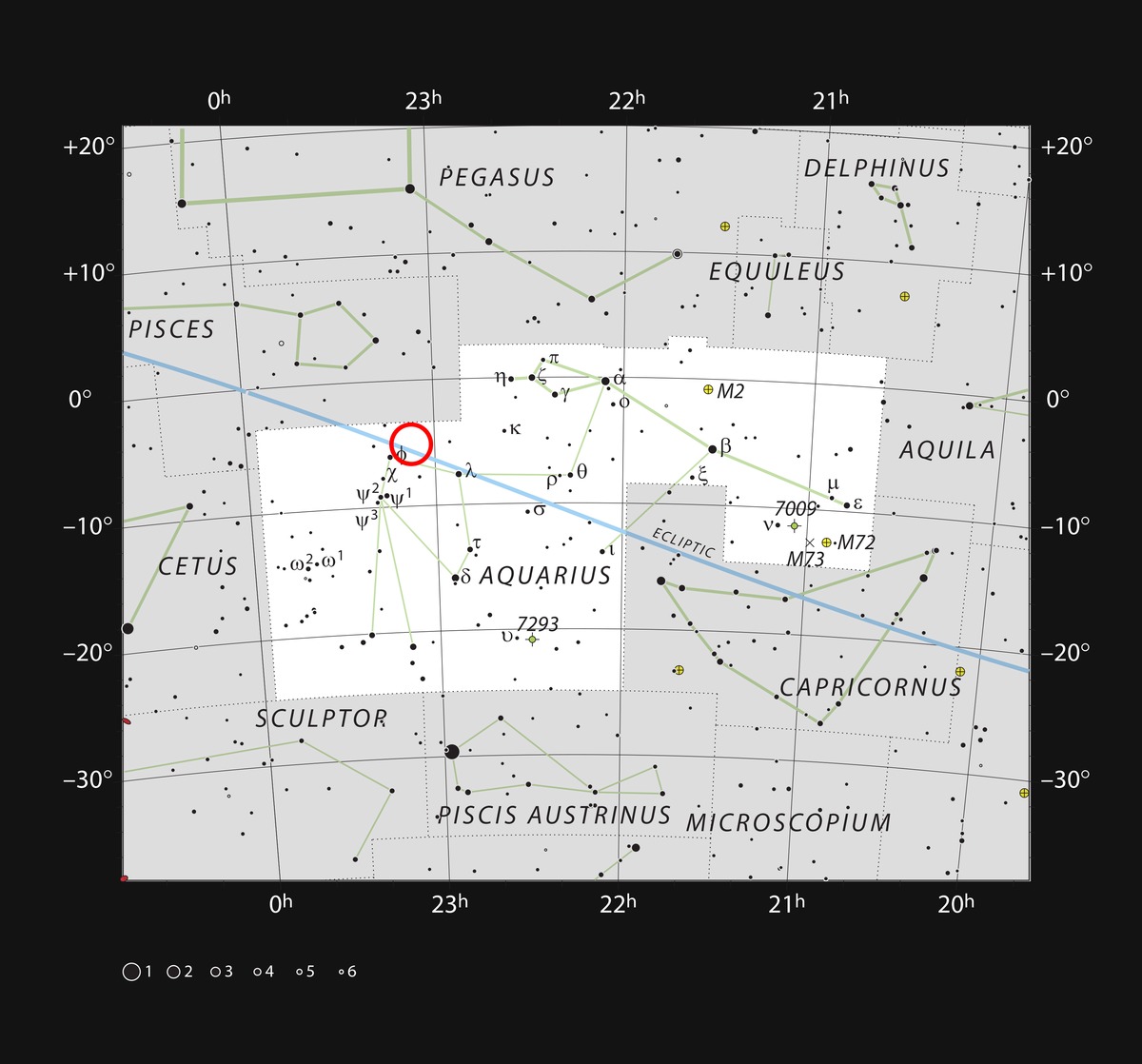(it’s not a solar system because Sol is our star, specifically; we’re the only Solar system)
TRAPPIST-1 is a cool red dwarf star[c] with seven known exoplanets.
Up to four of the planets – designated d, e, f and g – orbit at distances where temperatures are suitable for the existence of liquid water, and are thus potentially hospitable to life.
The red dwarf star TRAPPIST-1 has an estimated lifespan of pretty much the entire lifespan of the universe. If any of those planets are habitable, and humanity goes there, we could live there until the end of the whole universe, no worrying about our sun going out in about 5 billion years. It could be our forever home.
The planets in the TRAPPIST system are extremely close to each other, so the night sky on any of them would be awe-inspiring, with multiple bodies bigger than our moon rising and setting every night.



I think tidally locked planets are fascinating. If they have water, they could be eyeball planets. There’s a habitable ring in the twilight zone, and depending on how hot the day side is parts of that might be habitable too.
But we’ll likely run into the same issue re the atmosphere as we have with Mars: no magnetosphere to prevent any atmosphere from getting stripped away. It’s starting to look like a self-protecting atmosphere like Earth has is quite rare in rocky planets.
If I could summon a genie and learn any one bit of knowledge, it’d be how to restart Mars’s dynamo. Once we have that, terraforming is a solved problem. Not easy, but doable.
Wasn’t there a kurzgesagt video that said something about being able to protect an atmosphere on Mars artificially via satellites and magnetism or something? I swear there was. So maybe we don’t even need to restart Mars’s dynamo (which let’s be real, would probably be impossible).
I don’t like the idea of a tenuous bunch of satellites keeping an atmosphere in play. Relying on technology to keep atmosphere on a planet sounds super risky. Like if we wanted to live in such a place, we’d live on a space station. Planets are supposed to be safe and solid.
The current theory is if we grab a few asteroids and hit mars just right, we can speed up its rotation enough to restart the dynamo. Sounds way cheaper than a permanent planetwide shield.
Does it though? I imagine that even if the system malfunctioned, the atmosphere would not disappear overnight. It would likely take a long time for the atmosphere to be affected significantly, which should give plenty of time to repair the system.
Maybe, but I don’t trust generations to consistently maintain it. I’d rather a self-correcting natural process.
Mars is an example of why the natural process isn’t exactly reliable either… You can engineer things to be as durable as planets, there’s just generally not much demand for a project to be that costly in resources. In this case, I’m pretty sure making an artificial magnetic field that’s more durable than the natural one would also be cheaper than recreating the natural one.